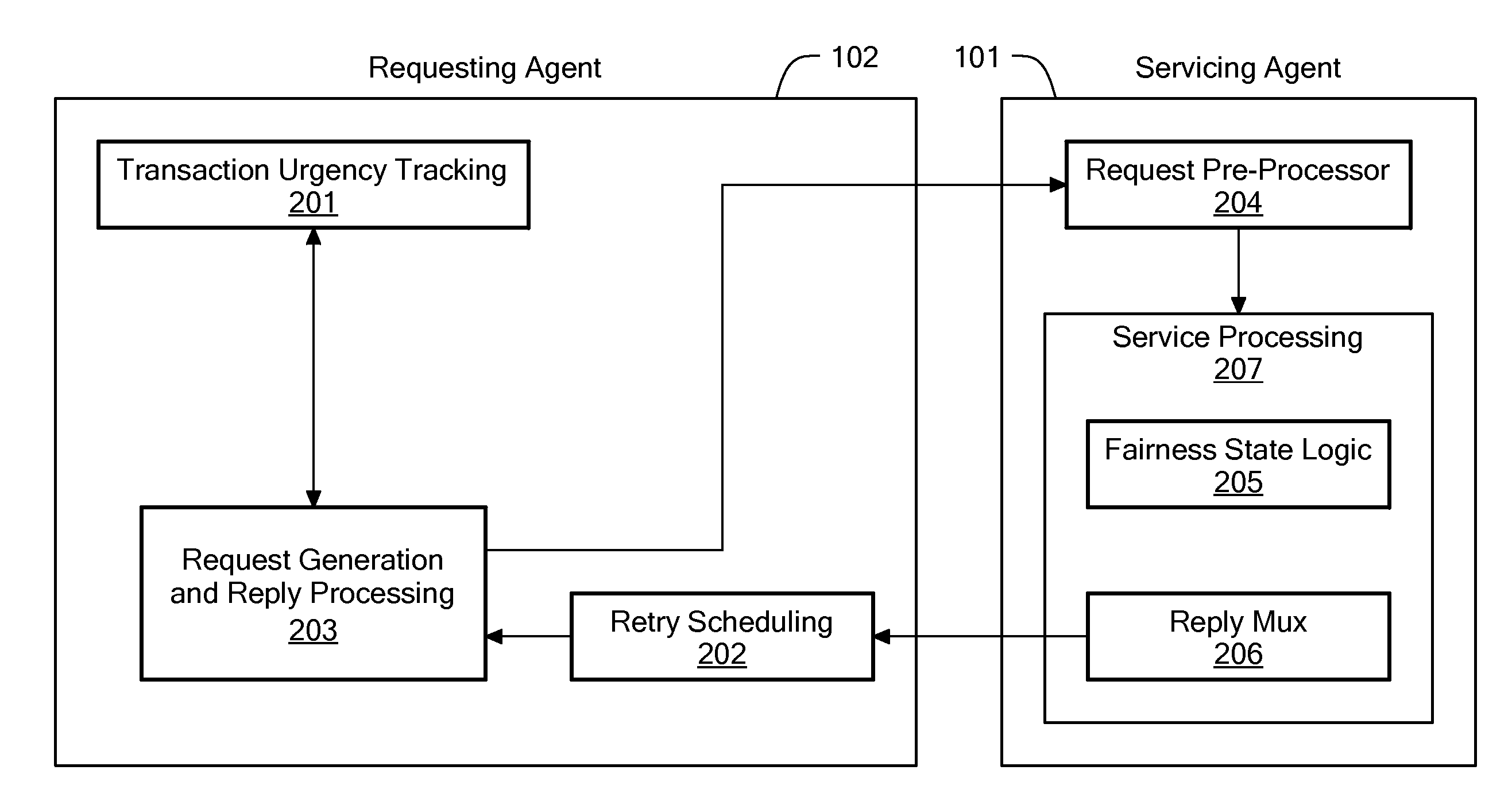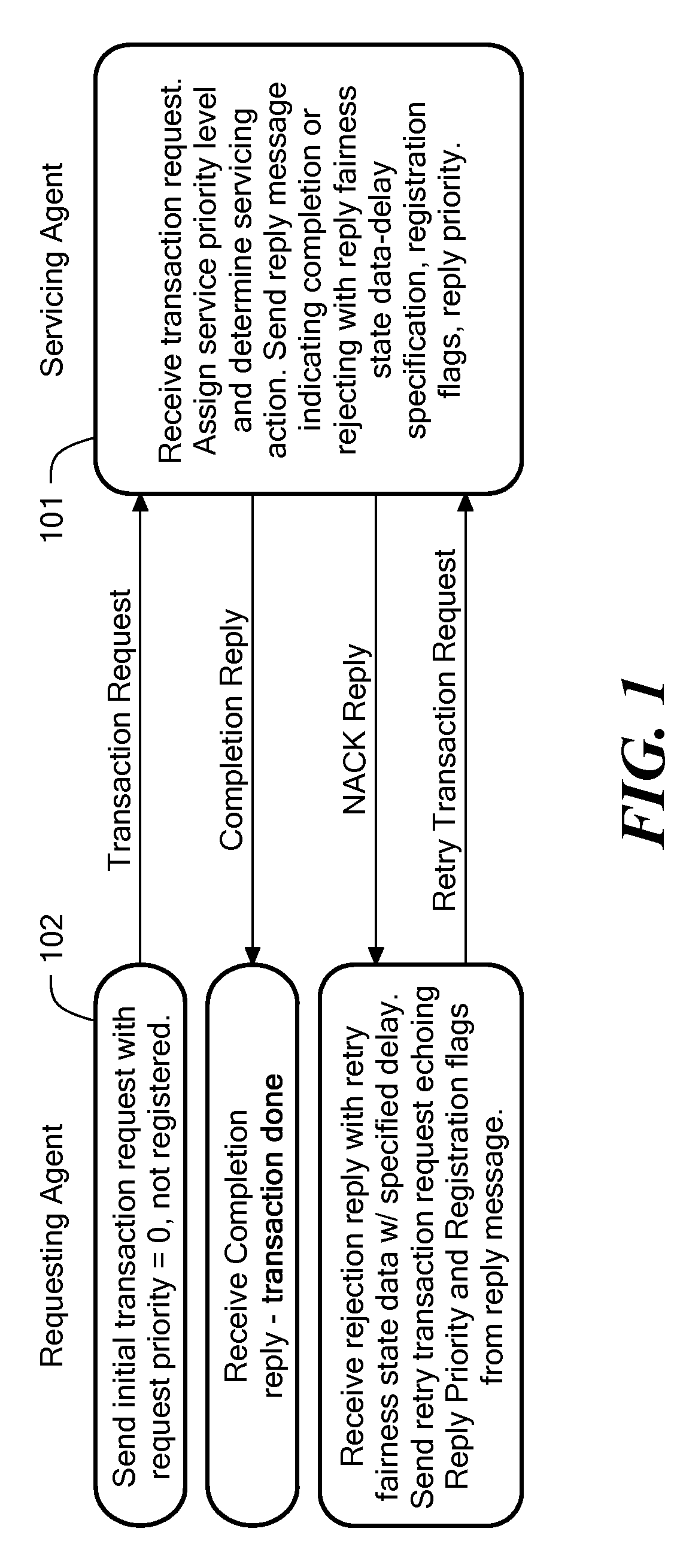Non-Saturating Fairness Protocol and Method for NACKing Systems
a fairness and system technology, applied in the field of computer network resources, can solve the problems of increasing the length of time for servicing transaction requests, affecting the service life of the system, so as to avoid priority saturation and avoid priority saturation
- Summary
- Abstract
- Description
- Claims
- Application Information
AI Technical Summary
Benefits of technology
Problems solved by technology
Method used
Image
Examples
Embodiment Construction
[0017]Definitions. As used in this description and the accompanying claims, Appendix 1 at the end of the Detailed Description sets forth the meanings of the terms listed therein, unless the context otherwise requires.
[0018]Embodiments of the present invention are directed to a fairness protocol for shared memory multi-processor computer networks. FIG. 1 illustrates operation in which a Servicing Agent 101 receives a transaction request over the network from a Requesting Agent 102 (one of multiple such Servicing Agents and transaction requests associated with operation of the network). The initial transaction request is for a service from the Servicing Agent 101 and includes an associated request priority based on the initial transaction urgency at the Requesting Agent 102, which in the first instance may typically be set to 0. The Servicing Agent 101 then provides to the transaction request an assigned priority that is based on the request priority in the incoming message and other ...
PUM
 Login to View More
Login to View More Abstract
Description
Claims
Application Information
 Login to View More
Login to View More - R&D
- Intellectual Property
- Life Sciences
- Materials
- Tech Scout
- Unparalleled Data Quality
- Higher Quality Content
- 60% Fewer Hallucinations
Browse by: Latest US Patents, China's latest patents, Technical Efficacy Thesaurus, Application Domain, Technology Topic, Popular Technical Reports.
© 2025 PatSnap. All rights reserved.Legal|Privacy policy|Modern Slavery Act Transparency Statement|Sitemap|About US| Contact US: help@patsnap.com



